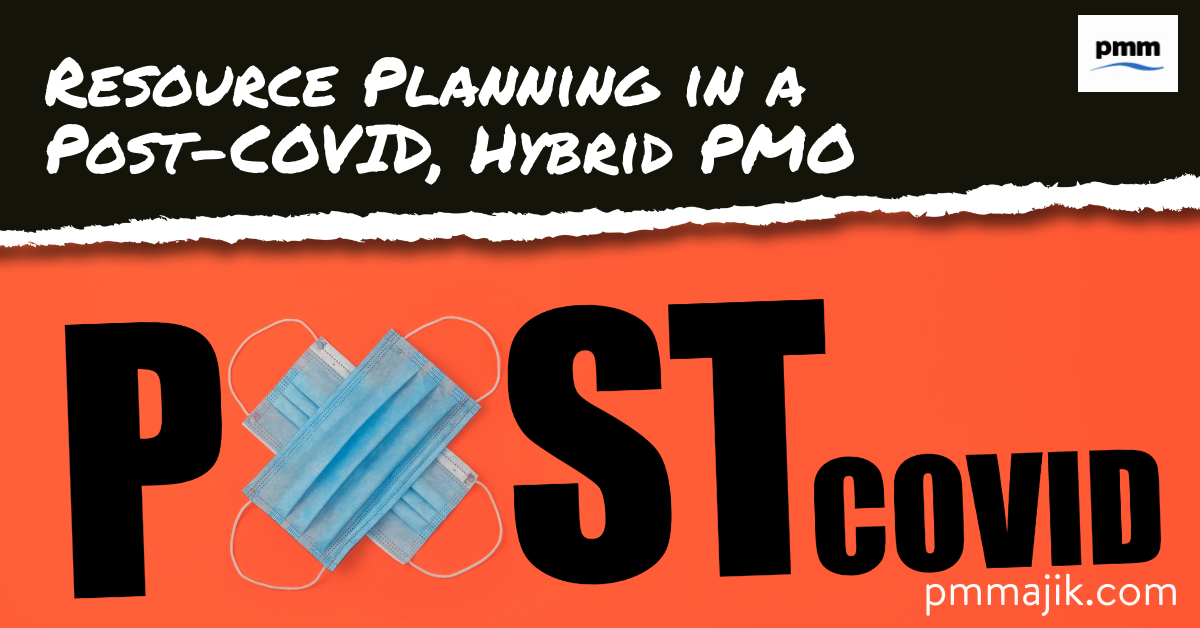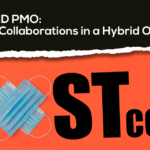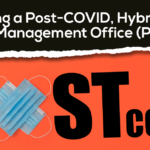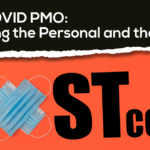The pandemic is quickly becoming part of the past, but it will have long-term repercussions for your project management office (PMO). With most workers now wanting to work at least part of the week at home, you need to understand resource planning in a post-COVID, hybrid PMO.
Many PMOs – along with other business units – will have made ad hoc changes to procedures and moved on-the-fly. New laws and regulations and increased absences from work meant fast adaptations.
As teams are returning to work for at least some of the week, it’s time for your PMO to properly plan for the new way of working. To help you figure out what that looks like for your business, we’re going to look at:
- Hybrid working’s effect on your resources
- The change in the relationship with temporary resources
- How to approach resource planning in a hybrid PMO
How will hybrid working affect your project resources?
Hybrid working is a new way of working, and every business and business area will need to understand its implications. There needs to be a balance between what your team what and what the business needs.
Retaining your skilled staff during the “Great Resignation” is vital, and offering flexible, hybrid working can be a part of that. You need to understand what each worker wants and see if that fits into your project needs.
Ascertain from each resource in your PMO and those in your project worker pool how many days at home and in the office they want. Have this on record, along with how flexible they can be, so you can refer back to it when planning projects.
How does hybrid working affect freelancers and contractors?
Whether your PMO increased its dependence on short-term contracted resources or cut back, now is the time to take stock of the situation.
Activities like relationship-building may have taken a backseat during the panic of the pandemic. Now you need to take stock and update your database of contractors, their skills, and their availability.
Hybrid working opens you up to a much wider talent pool of freelancers and contractors. Ensure that you know what your location expectations are when hiring temporary talent and be clear about your expectations.
How does resource planning need to change for hybrid working in a PMO?
As we touched on earlier, you first need to understand the wants and needs of your workers. From there, you will need to decide if your hybrid working policy will be:
- The same across your PMO and all projects
- Tailored to the individual needs of each person
- Agreed on a project-by-project basis
Each option presents challenges, and how you approach your resource planning will be determined by which you choose.
Having an element of flexibility with the mix of in-office and at-home working will likely be the best solution. Some projects will lend themselves to lots of flexibility, letting the team decide on their location for much of the time.
Other times, a project may require a lot of hands-on collaboration that may limit the number of days the team can spend working from home.
Using what you’ve learned from projects during the pandemic, create a document that will help your PMO and project manager decide if a project is suitable for hybrid working and how flexible it can be.
This may even need to go down to the activity level. In this case, build into your project planning a decision about whether a task will require in-office work. Your project manager can use this to decide which days of the week an activity may need to be completed on who the activity is assigned to.
Planning your project resources post-COVID
Your permanent team and temporary contractors will have new expectations of how their working week is structured. Ensure you know your project resource availability now that government regulations aren’t mandating working from home.
Take time to redesign your project planning methods so your project managers can improve their resource planning for a post-COVID, hybrid PMO.






